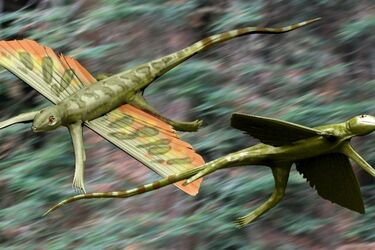Student in Britain finds remains of reptile that lived on Earth 200 million years ago (photo)

Researchers from the University of Bristol have discovered that 200 million years ago, the Mendip Hills in Somerset were home to winged reptiles.
Cuneosaurs, similar to lizards but closer to the ancestors of crocodiles and dinosaurs, had two species: one with large wings and the other with shorter wings. Their wings were made of a layer of skin stretched over their elongated side ribs, according to the University of Bristol.
Cuneosaurs were small animals that could fit neatly in the palm of your hand. They hunted insects, climbed trees, and could fly up to 10 meters into the air.

The discovery was made by Master's student Mike Cawthorne while researching numerous reptile fossils in limestone quarries that formed the largest subtropical island at the time, called Mendip Paleo Island.
The study also records the presence of reptiles with complex teeth, the trilophosaurus Variodens and the aquatic Pachystropheus, which probably lived similarly to the modern otter.
The animals either fell or their bones were washed into caves and cracks in the limestone.
"All the animals were small. I was hoping to find dinosaur bones or even some of their teeth, but in fact, I found everything but dinosaurs," said Mike Cawthorne.
Professor Mike Benton from the Bristol School of Earth Sciences explained: "It took a lot of work to identify the fossil bones, most of which were separate rather than in a skeleton."
Mike Cawthorne was able to compare the individual jaws and other bones with more complete specimens from other sites around Bristol.
He showed that the Mendip Paleo Island, which stretched from Frome in the east to Weston-super-Mare in the west, almost 30 km long, was home to a variety of small reptiles that fed on plants and insects.
The area around Bristol 200 million years ago in the Late Triassic was an archipelago of small islands located in a warm subtropical sea.
Dr. David Whiteside from Bristol added: "The bones were collected by several major fossil prospectors in the 1940s and 1950s, including Tom Fry, an amateur collector working at the University of Bristol who used to cycle to the quarries and return loaded with heavy bags of rocks.
This discovery gives us new insight into what animals inhabited the Earth 200 million years ago. It also proves that winged reptiles were more widespread than we previously thought.
If you want to get the latest news about the war and events in Ukraine, subscribe to our Telegram channel!
